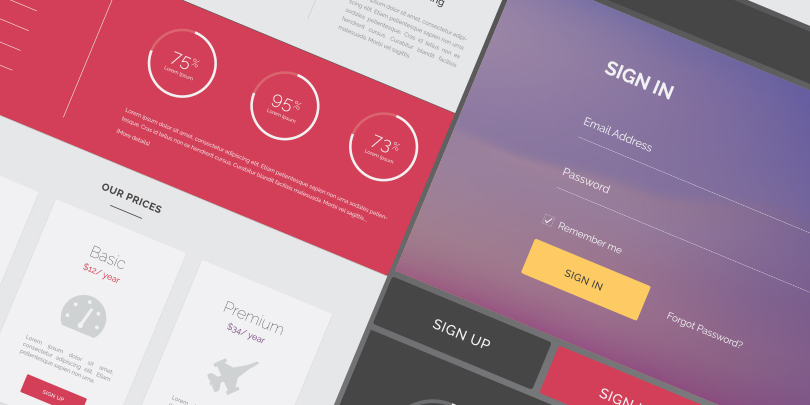Web design plays a crucial role in determining your site’s success, particularly when it comes to SEO. In Perth, businesses are increasingly realising the importance of a well-designed website that conforms to search engine guidelines. A strategic web design not only attracts and retains visitors but also improves your rankings on search engines like Google.
The way your website is designed affects various SEO factors. Elements such as mobile-friendliness, page load speed, user experience, and the quality of content all contribute to how search engines perceive and rank your site. Ignoring these aspects can result in lower search rankings and reduced online visibility.
Understanding how web design and SEO are interconnected is essential for any business that wants to thrive online. When you align your web design with SEO best practices, you create a site that is both user-friendly and search engine-friendly. This leads to more traffic, higher engagement, and ultimately better conversion rates.
In this article, we will explore the different ways web design in Perth impacts your site’s SEO, helping you make informed decisions to enhance your online presence. Whether you’re revamping an existing site or starting from scratch, these insights will be valuable in guiding your strategy.
Importance of Mobile-Friendly Design for SEO
A mobile-friendly design is essential for SEO as more people use smartphones and tablets to browse the web. Google recognises this trend and has prioritised mobile-first indexing. This means Google predominantly uses the mobile version of content for indexing and ranking.
If your website isn’t optimised for mobile devices, you risk losing visibility and rankings. Mobile-friendly sites are easier to navigate and provide a better user experience, which reduces bounce rates and increases engagement. Elements like responsive design, which adjusts the site layout automatically based on the screen size, are critical.
In addition, a mobile-friendly site can load faster on handheld devices. Speed is a significant ranking factor for Google. A slower site can lead to a higher bounce rate as users are likely to leave if a page takes too long to load. Ensuring your website is mobile-friendly is not just about meeting user expectations but also about improving your site’s SEO performance.
Impact of Page Load Speed on Search Rankings
Page load speed is a critical factor that affects your site’s search rankings. Users expect websites to load quickly. If your site takes too long, visitors will likely leave, leading to a higher bounce rate. Google considers page load speed as an essential ranking factor because it impacts user satisfaction.
Several elements impact your site’s loading speed, including image sizes, server response time, and the use of caching. Compressing images and leveraging browser caching can significantly improve load times. Additionally, minimising redirects and optimising code (e.g., HTML, CSS, JavaScript) also contribute to faster page loads.
A faster loading site provides a better user experience, keeping visitors engaged and reducing bounce rates. Google rewards sites that offer a seamless experience by ranking them higher in search results. Therefore, investing in your site’s speed is crucial for both user satisfaction and SEO. Understanding these factors helps in designing a website that performs well and meets the expectations of both users and search engines.
Role of User Experience in Enhancing SEO
User experience (UX) is a pivotal aspect of web design that directly influences your site’s SEO performance. A well-designed website improves user satisfaction, encouraging visitors to stay longer and explore more pages, which signals to search engines that your site is valuable.
One way to enhance UX is by ensuring your site has intuitive navigation. Users should be able to find what they need quickly and easily. When navigation is clear and logical, users engage more with your content, reducing bounce rates and increasing the time spent on your site.
Another key factor is readability. Content should be easy to read, with clear fonts, appropriate colours, and sufficient spacing. Avoid cluttered layouts that overwhelm visitors. Instead, opt for a clean design with a focus on content hierarchy, ensuring important information stands out.
Additionally, incorporating interactive elements like forms, chatbots, and videos can enrich the user experience. These features not only make your site more engaging but also provide valuable opportunities for interaction, further boosting your SEO efforts by keeping users on your site longer.
Benefits of Quality Content and Structure
High-quality content paired with a well-structured design is essential for strong SEO performance. Quality content is informative and relevant and provides value to your audience, which search engines like Google favour.
Start with keyword research to understand what your audience is searching for. Incorporate these keywords organically into your content to improve relevance and searchability. Avoid keyword stuffing, as it can negatively impact your rankings.
Structure your content hierarchically. Use headings (H1, H2, H3) to break up text and make it easier for both users and search engines to understand the main topics and subtopics. This not only improves readability but also helps in SEO by signalling the importance of different sections.
Ensure your website has a logical structure with a clear URL hierarchy. An organised site structure allows search engine crawlers to index your pages more effectively. Include internal links to related content, as this helps users navigate your site while signalling to search engines the relationship between different pages.
Conclusion
Web design in Perth significantly affects your site’s SEO. Factors like mobile-friendliness, page load speed, user experience, and quality content all play crucial roles in determining your search rankings. By prioritising these elements, you can create a website that is not only visually appealing but also optimised for better search engine performance.
A well-designed website ensures that visitors have a positive experience, which can lead to increased engagement, lower bounce rates, and ultimately, higher conversion rates. As search engines continue to evolve, maintaining a user-friendly and fast-loading site becomes even more important.
For businesses looking to optimise their web design and boost their SEO, Lethal offers expert services tailored to your needs. Contact us today to learn how we can help you create a high-quality, SEO-friendly website that enhances your online presence and drives business growth.





